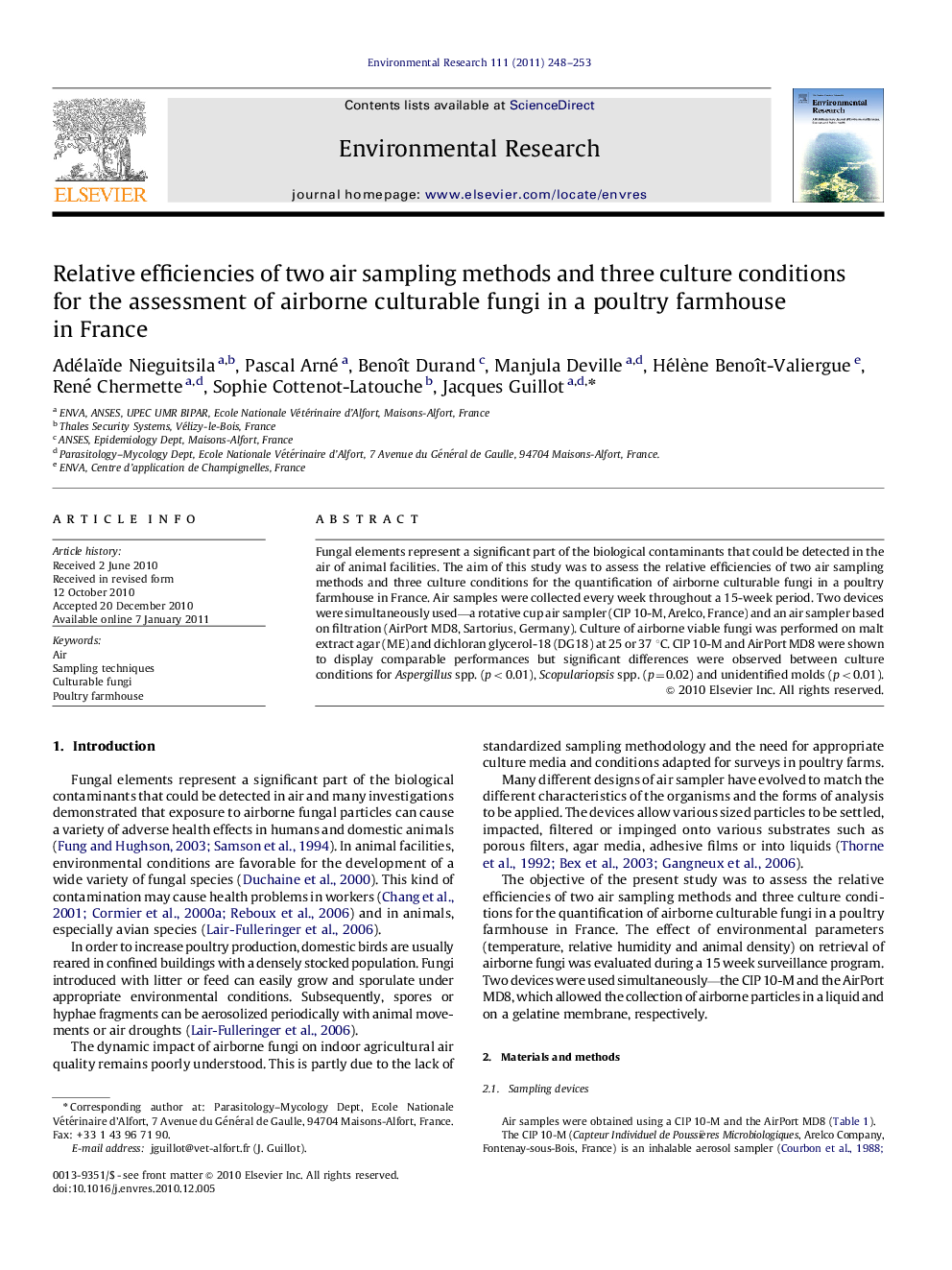| Article ID | Journal | Published Year | Pages | File Type |
|---|---|---|---|---|
| 4470237 | Environmental Research | 2011 | 6 Pages |
Fungal elements represent a significant part of the biological contaminants that could be detected in the air of animal facilities. The aim of this study was to assess the relative efficiencies of two air sampling methods and three culture conditions for the quantification of airborne culturable fungi in a poultry farmhouse in France. Air samples were collected every week throughout a 15-week period. Two devices were simultaneously used—a rotative cup air sampler (CIP 10-M, Arelco, France) and an air sampler based on filtration (AirPort MD8, Sartorius, Germany). Culture of airborne viable fungi was performed on malt extract agar (ME) and dichloran glycerol-18 (DG18) at 25 or 37 °C. CIP 10-M and AirPort MD8 were shown to display comparable performances but significant differences were observed between culture conditions for Aspergillus spp. (p<0.01), Scopulariopsis spp. (p=0.02) and unidentified molds (p<0.01).
► Two samplers (CIP 10-M and AirPort MD8) displayed comparable performances for the detection of airborne culturable fungi in a poultry farm. ► Fungi most frequently recovered during the 15-week air sampling period in the poultry farm belonged to the genera Aspergillus, Penicillium, Alternaria, Scopulariopsis and Cladosporium. ► The concentration of each individual fungal type varied according to culture conditions.
